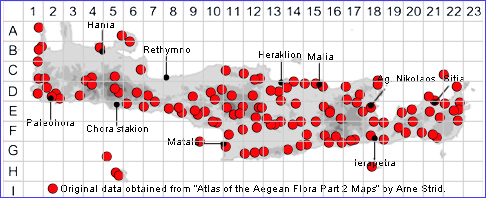SPECIES DESCRIPTION
MUSCARI SPREITZENHOFERI
Family and Genus:- See- HYACINTHACEAE/Subgen. LEOPOLDIA
Common Names:- None
Homotypic Synonyms:- Leopoldia spreitzenhoferi, Muscari amoenocomum,
Muscari creticum
Meaning:- Muscari (L) Musk-like (from the Turkish, moscos, fragrance).
Spreitzenhoferi. Meaning unknown, but possibly for someone named
Spreitzenhofer.
General description:- Bulbous perennial plant.
Bulb:-
1) Tunics pinkish or brown.
Scape:-
1) 5-15 cm, usually shorter than the leaves.
Leaves:-
1) 3-5, 6-20 mm long, glaucous, linear, canaliculate, the outermost conspicuously
wider.
Flower:-
1) Raceme, dense, conical, becoming lax, cylindrical.
2) Pedicels of the fertile flowers, 4-7 mm, usually ascending at least in fruit.
3) Fertile flowers, 4-7 mm, tubular-urceolate, sometimes slightly constricted in
middle; shoulders rounded, deep brown; proximal part of tube greenish-brown;
teeth deep yellow, patent or recurved.
4) Sterile flowers, scarcely developed, forming a minute tuft of threads, rarely few
and small.
Fruit:-
1) Capsule, 6-8 x 6-8 mm, globose, sometimes emarginate or acuminate.
Key features:-
1) Inflorescence, conical, with ascending pedicels.
2) Fertile flowers, dark greenish-brown.
3) Sterile flowers, few or absent.
Habitat:- In a variety of sandy and rocky habitats, dry open shrubby vegetation and
mountain dolines, generally over limestone. 0-2200 m.
Distribution:- Cretan endemic. Widespread and common.
Flowering time:- Mar to early July, depending on altitude.
Photos by:- Steve Lenton

